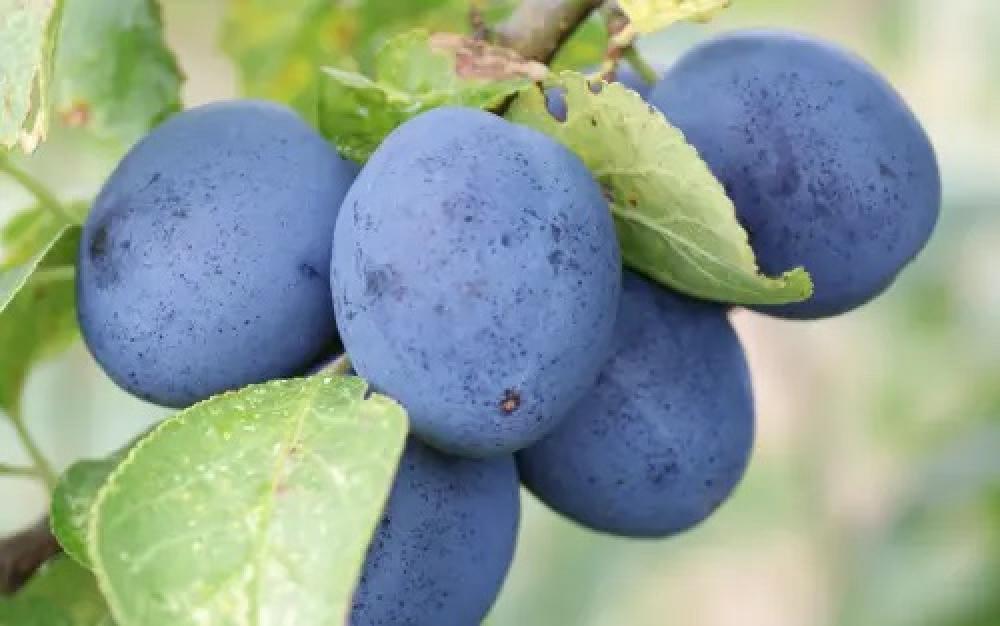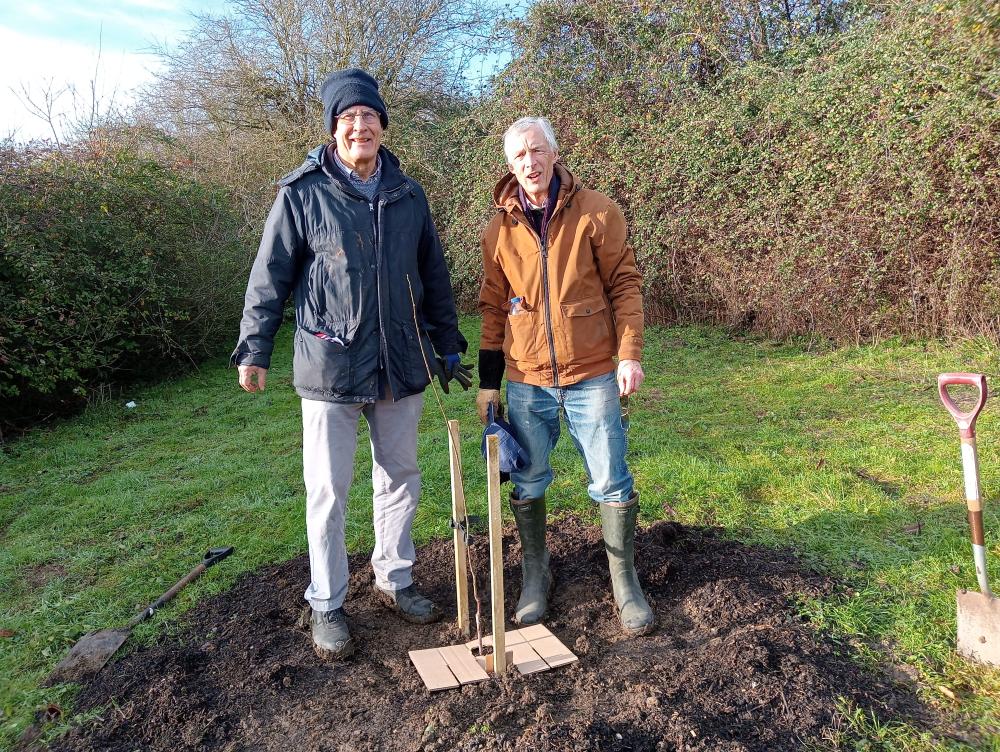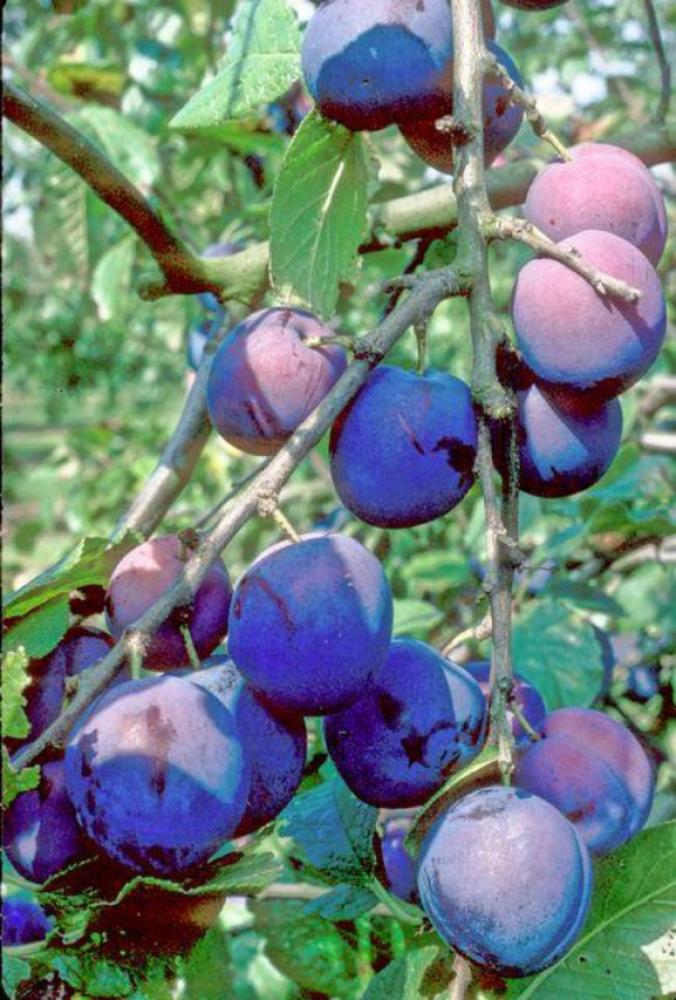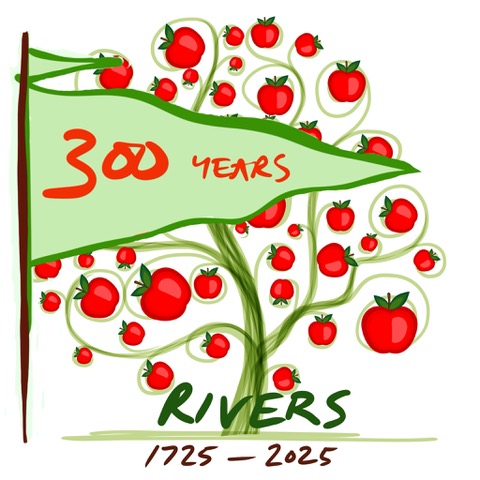Plums for Rivers 300th Anniversary: How to get cultivars from Rivers Nursery’s 19th century varieties into the 21st century Rivers Heritage Orchard?
Written by Colin Gill
Published on March 2, 2025.
Return to the contents page.
A couple of years ago, I offered to look into how we could regenerate the site for future generations and continue both the legacy of the Rivers family and the work of previous Orchard volunteers. The trees in the rescued orchard are likely to have been mother trees. Briefly, a mother orchard can be described as having a set of trees that can be used for the selection of future varieties for domestic and commercial use. Mother trees can be described as trees cultivated to provide the scion wood for propagating trees by grafting or budding. Our site, however, is no longer setup as a mother orchard.
Most fruit trees are a hybrid of two plants that have been grafted or joined together. The rootstock is the root system of a tree with a part of the stem. Onto this, the flowering or fruiting part of another tree (called the scion) is grafted. A scion is used for grafting a 10-12mm stem of one species to the rootstock of another. A budwood is joined to the rootstock of another species through a technique called budding. A single bud or eye (budwood) is attached to the rootstock seedling instead of using the whole stem (scion).
My research has fortunately coincided with the 300 year anniversary of the nursery and therefore we felt what better time is there to plant out some cultivars, which we did last December. This process culminated in the planting of 6 plum trees – a small step but hopefully a significant one!
The main objective was to select cultivars developed by the Rivers family rather than those from other growers listed in their catalogues. We decided to start with planting plums as we’ve lost a number over the years in high winds and to rebalance the orchard as most are apple trees. Of the six chosen, four are freestone and two are semi-freestone or clingstone ie the stone or pip can be removed without too much difficulty.
I researched the National Fruit Collection (NFC) and East of England Apples & Orchards Project (EEAOP) websites to source these cultivars from and found the former had by far the most extensive choice. Selection was aided by their website allowing you to highlight which county they were developed in, type of plum, stone, skin colour and flowering period. I therefore ordered the following cultivars from the National Fruit Collection at Brogdale in Kent where there were also handy notes on who developed them with useful dates thereby fitting in with my selection criteria. All were grown by Rivers Nursery.
Archduke – a freestone, culinary plum and introduced in 1883. Flesh is greenish-yellow, often tinged with red and course textured. Flavour is fair and delicious when cooked.
Early Transparent Gage – a freestone, desert plum raised by Rivers in 1866 and introduced in 1873. Fruits have golden-yellow flesh with a very sweet and rich flavour.
Mallard – a freestone, dessert plum raised and introduced in 1885/86. Fruits have golden yellow, firm, moderately juicy flesh, which is very sweet and moderately rich.
Monarch – a freestone, culinary plum introduced in 1885 and awarded a first class certificate by RHS in 1894. Fruits have very juicy flesh with a moderately sweet and tart taste and slightly rich flavour.
Czar – a semi-freestone, culinary plum first fruited in 1874. Fruits have tender flesh with a pleasant acid flavour. The Russian Emperor Alexander II was on a visit to this country, and so the plum was named Czar in his honour.
Swan – a semi-freestone, culinary plum first fruited in 1885 and introduced in 1897. Fruits have very juicy flesh with a fair to insipid flavour.
My next decision was who to choose to carry out the grafting process and the NFC provided me with several nurseries. Having viewed their helpful website together with being based on land adjoining the NFC, I decided use Grow at Brogdale, a commercial nursery, for grafting the cultivars onto St. Julien A rootstock. This particular rootstock is semi-vigorous and fits into the definition of a traditional Orchard. A traditional orchard is described under the UK Priority Habitat as ‘Trees grafted onto vigorous rootstocks ie to produce trees that are comparable in size to that of that individual tree on its own roots. In natural grassland – grazed or un-grazed with trees and ground flora managed without any chemical spray, herbicide or pesticide, broadly managed for biodiversity and landscape value, as well as crop.’ This tends to include most community orchards.
After researching spacing distances for plums grafted onto St. Julien A rootstock, I did come across some conflicting advice with a range of 4m to 6m and even 7.3m from a late 19th century Rivers catalogue. My final decision was to plant 6m apart in rows 6m apart. This distancing allows for plenty of growth in future years and avoids any possible overcrowding. The plums should fruit in the next two to three years with a small crop and and a good crop in three to five years.
My thanks must also go to Rob Richardson who provided me with helpful advice throughout the whole process of sourcing, planting and later pruning of these plum cultivars.
Further Reading
Also see Elizabeth's article, published at the same time as this article. The careful naming conventions and rules described in that article are critical to ensuring the fruit obtained for restocking the Rivers Orchard are the same at those developed by Rivers many years ago.
Colin Gill, February 2025

Czar Plum. |

Colin and Eric with newly planted plum. |

Monarch Plum. |


